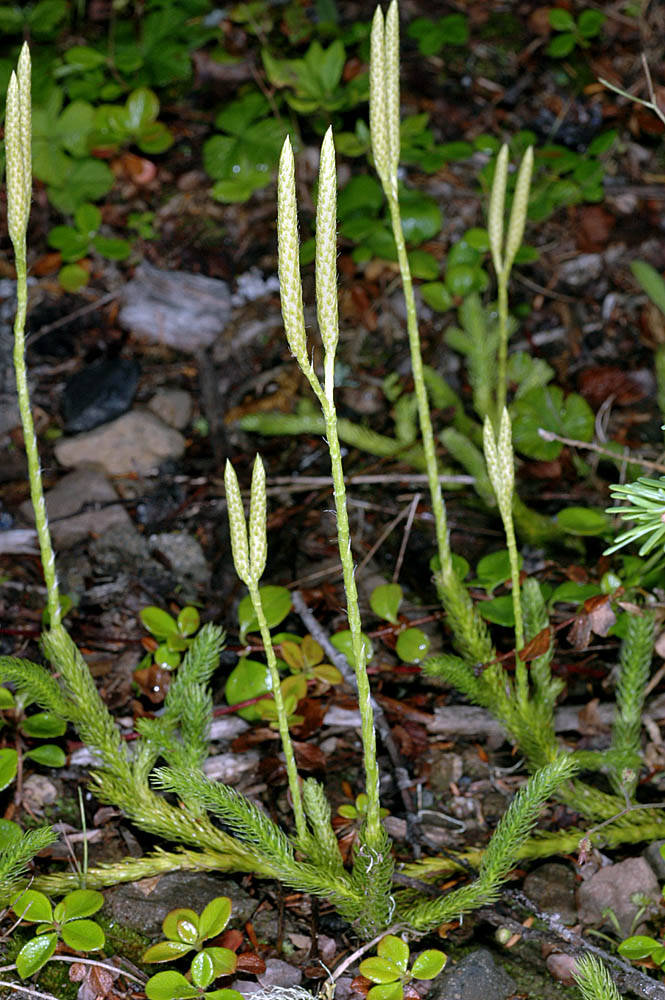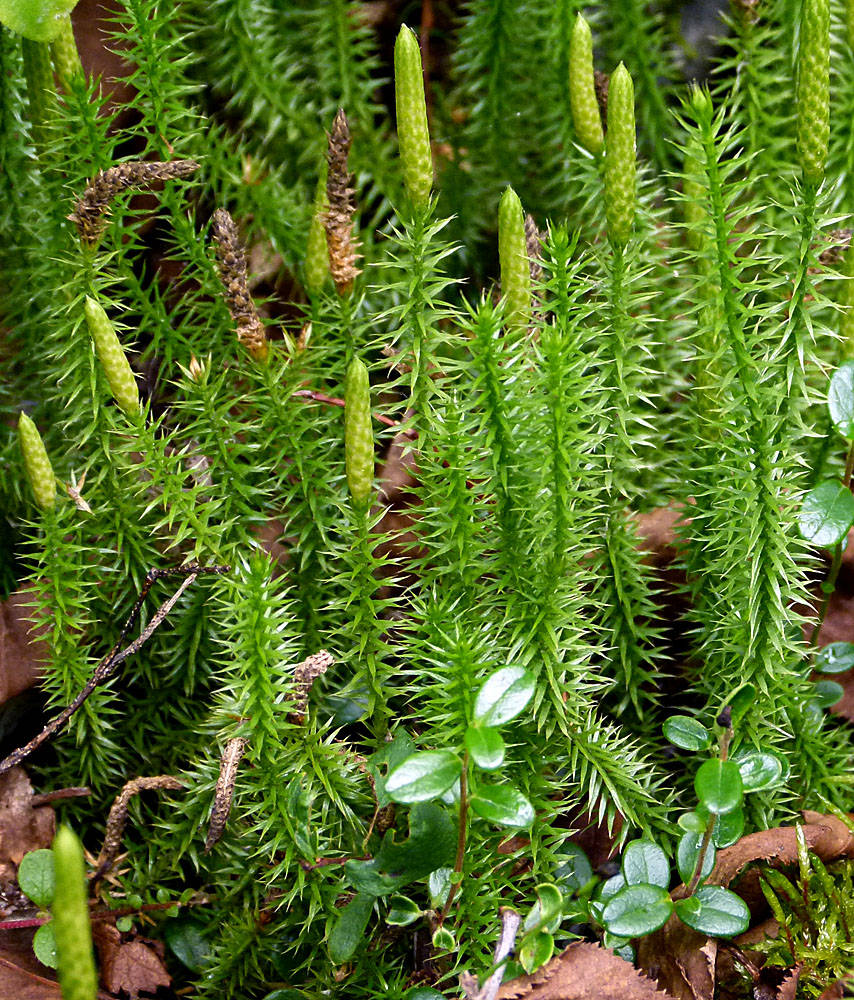Lycopodium clavatum
Lycopodium
common clubmoss, stag's horn clubmoss
clubmoss
sparsely to densely leafy;
lateral branches arising from the main stem, forming clumps of erect, densely leafy stems, 10–25 cm tall.
densely leafy; annual growth sections often separated by a leafless constriction.
absent.
linear, incurved; in 6 or more ranks, 7–8 mm long, usually entire, occasionally with sparse teeth, narrowed at the apex into a long caducous hair tip;
tip 1–2 mm long.
linear to narrowly lanceolate; entire or minutely toothed;
leaves on erect branches borne in 6 or more distinct ranks.
well developed.
2–5 cm long.
at ends of erect; leafy, fertile branches, or in a simple to branched peduncle with reduced leaves bearing 1–several cones.
straw colored, approximately 3.5 × 2 mm; ovate;
apex with a caducous tip hair.
=68.
Lycopodium clavatum
Lycopodium
Moist to dry sites in forests. 0–1700 m. Casc, CR, Est, Sisk. CA, ID, WA; mainly western and eastern US and Canada, south to South America; Africa, Eurasia. Native.
Plants from western North America, sometimes described as var. integrifolium, differ from those in the east by the early shedding of the hairs on the leaf tips.
Temperate to subarctic regions. 15–25 species; 2 species treated in Flora.
Spores of Lycopodium clavatum and other common species are harvested and sold as Lycopodium powder, used for a variety of purposes including ignition and lubrication.
Duncan Thomas
Duncan Thomas
- Local floras:
BC,
CA,
OR,
WA
- Local Web sites:
CalFlora,
CalPhotos,
Flora NW,
PNW Herbaria
WildflowerSearch
iNaturalist (observations)
USDA Plants Database
- LBJ Wildflower Center
- SEINet
- Plants of the World Online
- Encyclopedia of Life
- Wikipedia
- Google Image Search
- Local floras:
CA,
OR,
WA
- Local Web sites:
CalFlora,
CalPhotos,
Flora NW,
PNW Herbaria
WildflowerSearch
iNaturalist (observations)
USDA Plants Database
- LBJ Wildflower Center
- SEINet
- Plants of the World Online
- Encyclopedia of Life
- Wikipedia
- Google Image Search




